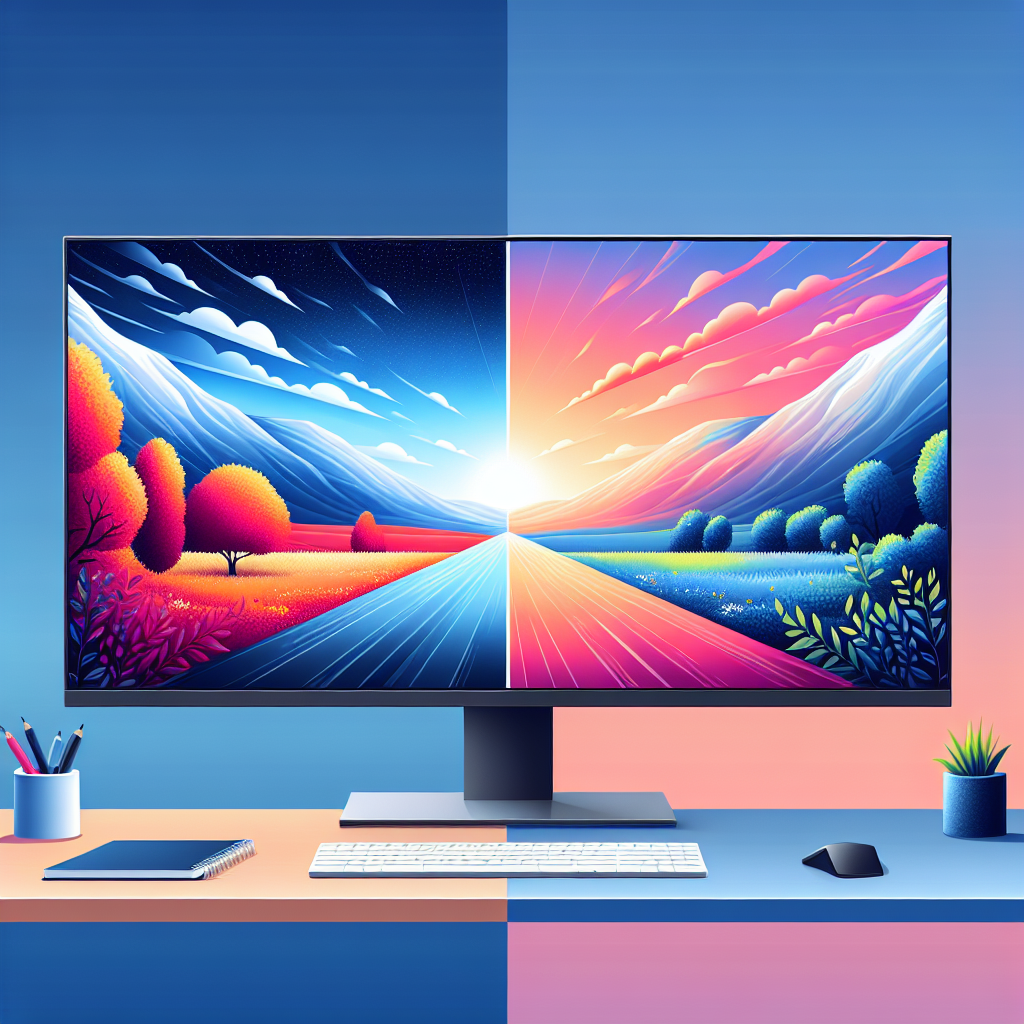When it comes to choosing a new monitor, OLED and QLED are two of the most prominent technologies you will encounter. Understanding the key differences between OLED and QLED can help you make an informed purchasing decision. Both technologies offer distinct advantages and disadvantages, making each suitable for different types of users and applications.
What is OLED?
OLED stands for Organic Light Emitting Diode. OLED technology uses organic compounds that emit light when an electric current is applied. This eliminates the need for a backlight, allowing each pixel to produce its own light. This feature contributes to OLED monitors’ excellent color accuracy and contrast ratios.
Advantages of OLED Monitors
- True Blacks: OLED pixels can turn off completely, producing perfect blacks and an infinite contrast ratio.
- Color Accuracy: OLED displays often offer superior color accuracy and vibrancy.
- Viewing Angles: OLED screens provide wide viewing angles without color distortion.
- Response Time: OLED monitors typically offer faster response times, making them ideal for gaming.
Disadvantages of OLED Monitors
- Burn-in: Prolonged display of static images can cause burn-in, where ghost images persist.
- Price: OLED monitors are generally more expensive than their QLED counterparts.
- Brightness: OLED monitors may not reach the same peak brightness levels as QLED monitors.
What is QLED?
QLED stands for Quantum Dot Light Emitting Diode. Unlike OLED, QLED technology relies on quantum dots combined with an LED backlight to produce light. Quantum dots are nanocrystals that emit light when illuminated and enhance the color and brightness of the display.
Advantages of QLED Monitors
- Brightness: QLED monitors can achieve higher levels of brightness, making them suitable for well-lit rooms.
- Color Volume: Quantum dots enable QLED monitors to display a wider range of colors at varying brightness levels.
- Lifespan: QLED monitors generally have a longer lifespan, as they are less susceptible to burn-in.
- Cost: QLED monitors are often more affordable compared to OLED monitors.
Disadvantages of QLED Monitors
- Black Levels: QLED monitors struggle to produce true blacks, as the backlight cannot turn off completely.
- Viewing Angles: Color and brightness can degrade when viewed from an angle.
- Contrast: The contrast ratio in QLED monitors is generally lower than in OLED monitors.
Comparison Table: OLED vs. QLED
| Feature | OLED | QLED |
|---|---|---|
| Technology | Organic Light Emitting Diode | Quantum Dot Light Emitting Diode |
| Light Source | Self-emissive | Backlit with quantum dots |
| Black Levels | True blacks (infinite contrast) | Good, but not true blacks |
| Brightness | Moderate | High |
| Color Accuracy | Excellent | Very Good |
| Viewing Angles | Wide | Moderate |
| Response Time | Fast | Moderate |
| Burn-in Risk | Yes | No |
| Price | High | Moderate |
Which is Better for You?
Choosing between an OLED and a QLED monitor ultimately depends on your specific needs and preferences. If you prioritize superior color accuracy, true blacks, and faster response times for gaming, an OLED monitor may be the best choice. However, if you need a monitor that performs well in brightly lit environments, offers excellent brightness, and is more cost-effective, a QLED monitor could be the better option.
When making your decision, consider the types of content you will be viewing and the environment in which you will use the monitor. Both OLED and QLED offer unique benefits that cater to different user preferences, ensuring that you will find a display technology that suits your needs.
Conclusion
In summary, both OLED and QLED monitors have their own sets of advantages and disadvantages. Understanding these differences will help you make a more informed choice tailored to your requirements. Whether you are a gamer, a professional in graphics and design, or a general user, knowing the strengths and weaknesses of each technology will guide you towards the right monitor for your setup.

